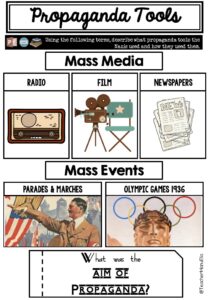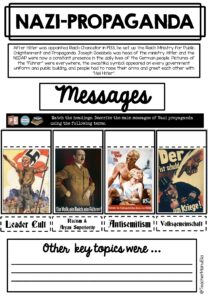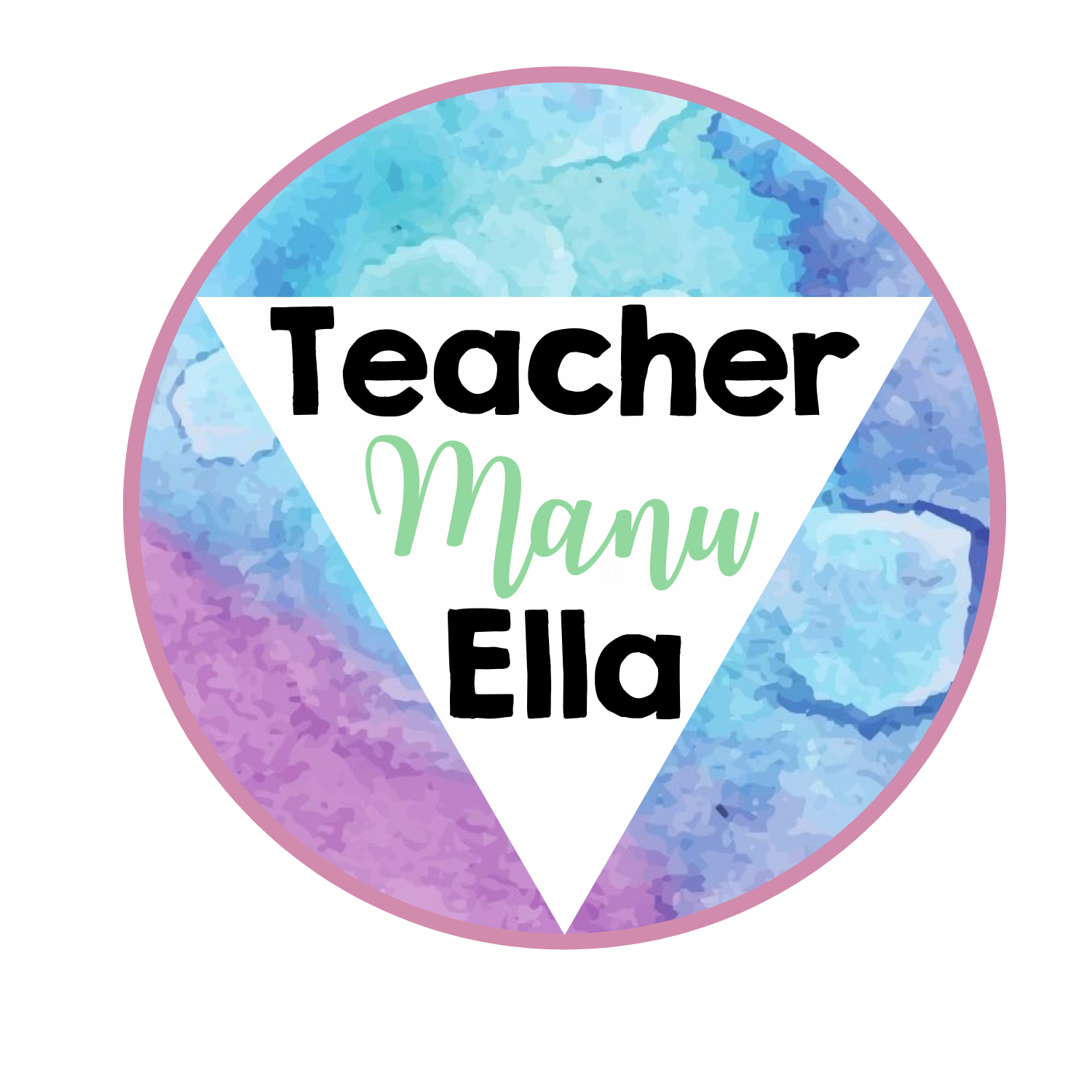As the saying goes, those who forget history are doomed to repeat it. That's why teaching the Holocaust is such a crucial aspect of WW2 social studies. Through exploring this dark chapter of human history, students can gain a better understanding of the dangers of bigotry and hatred.
But learning about the Holocaust doesn't have to be a somber or static experience. By using interactive notebooks, educators can create engaging lessons that help students connect with the material on a deeper level.
Understanding the Holocaust
The Holocaust is undoubtedly one of the darkest and most tragic events in human history. It occurred during World War II, mainly in Nazi Germany, which was under the leadership of Adolf Hitler. The Holocaust was a systematic and deliberate genocide, resulting in the death of approximately six million Jews and other targeted groups, who were deemed inferior by the Nazis. This genocide involved unspeakable atrocities, such as the establishment of concentration camps, medical experiments, forced labor, and mass shootings. To understand the Holocaust, one must consider the historical context and causes that led to it. It is crucial to examine the factors that enabled the Nazi's rise to power and their propaganda campaign that aimed to dehumanize Jews and other groups. Additionally, understanding the key events and timeline of the Holocaust is instrumental in learning the lessons of this dark moment in human history.
Holocaust Worksheets: Advantages of this Interactive Notebook
The Holocaust is an incredibly important topic to cover in social studies, but teaching it effectively can be a daunting task. That's where my Interactive Notebook comes in. These bundled Holocaust worksheets provide a comprehensive overview of this tragic period in history, complete with pre-reading activities, thought-provoking questions, and writing tasks, as well as critical thinking prompts.
One of the most significant advantages of using such worksheets is the enhancement of the learning experience. Students work through the material at their own pace, engage with it in new and creative ways, and are encouraged to reflect deeply on what they've learned.
Timelines, artistic expression activities, and possible group projects like working on further enhance the educational experience. With Holocaust lesson plans that incorporate these worksheets, teachers can feel confident that they are providing their students with an exceptional level of education on this critical topic.
An overview of the topics covered
Timeline

The first part of this World War II notebook is all about the timeline of important events during this world history topic. This section has two different options to choose from. For the first option, students do their own research to find out what events happened and when. For the second option, students cut out boxes with text and glue them to the timeline in the right order. You can prompt them to talk about why those events were important.

The timeline focuses on big events that led to the rise of Nazism. This includes the first time Jewish shops were boycotted, the first time concentration camps were built, when the Nuremberg Race Laws took away the rights of the Jewish people, when Nazis began rioting against the Jewish population, and when the first labor camps and extermination camps were created. There are also important events about people who fought against Nazis, like Sophie Scholl and Oskar Schindler. The timeline ends with the end of World War II, when Allied troops saved people from the camps.
Propaganda Campaign of the Nazi Party before and during the World War


Nazi propaganda is a critical part of this notebook. Students learn about the various messaging tools used by the Nazi regime, including mass media and mass events. They explore the themes of propaganda, including the glorification of the Nazi regime and its leader, Adolf Hitler. The notebook covers specific examples of propaganda messages such as “The Wandering Jew”, "World Jewry", "The Jew as a Parasite" and “ The Jewish Moneylender.”

Systematic Persecution of the Jewish People

The systematic persecution of the Jewish People in Nazi Germany is covered in detail in this notebook. From Students learn about specific laws such as the Nuremberg Laws and the November Pogroms (students may have seen images of broken glass all over the place). They can discuss how these laws and events led to the exclusion and persecution of Jews in Germany.
Holocaust and Euthanasia

Students will also learn about the history of the Holocaust and euthanasia through a fill-in-the-blank activity. You will be teaching students how the largest Jewish community was cornered into the Warsaw Ghetto, how concentration camps played a huge part in Hitler's reign, starting in 1933. These camps were initially used to detain political opponents, but soon expanded across Germany. By 1939, there were six camps with different purposes such as murder, forced labor, and internment. The Nazis went on to establish many more labor camps - over 1000 in total - including seven extermination camps after the Wannsee Conference in 1942, which covered the final solution. Auschwitz Birkenau was the largest and most organized of these camps in Europe, with three facilities. Tragically, more than 1.25 million people lost their lives there. It's estimated that around 10 million people in total, including millions of Jews, were killed in Nazi camps. Unfortunately, we can't know the exact number due to destroyed prisoner lists.
Famous Resistance Fighters like Anne Frank and more

One of the key features of this interactive notebook is its attention to individual stories. The notebook offers a section on concentration camps and includes biographical cards for students to fill in themselves. These cards provide an opportunity for students to learn about individual experiences during the Holocaust and can be an emotional experience for some students.
Important Vocabulary

Finally, the notebook ends with a vocabulary section that includes key terms and definitions related to the Holocaust. This Word Bank provides a way for students to build their vocabulary and improve their comprehension of the events of the Holocaust.
Integrating Technology into Holocaust Worksheets
By incorporating technology into history lessons, teachers can provide students with a more engaging and exciting learning experience. Imagine using my amazing Interactive PowerPoint on the Holocaust alongside an interactive notebook to ensure that students are fully immersed in the subject. This incredible tool includes 50 slides that students can access at school, on their personal devices, or even from home! They can use these slides as a presentation or click through them independently or in small groups, making it a fantastic addition to any classroom.
One of the best parts of this tool is that it requires absolutely no preparation from the teacher. Students can access the slides and start learning immediately. The Interactive PowerPoint is the ultimate complement to the interactive notebook, which showcases student learning in a fun, creative, and interactive way.
This innovative approach to learning is sure to leave a lasting impression on students. It's an excellent way to help them engage with historical events and develop a deeper understanding of the subject matter. By incorporating technology into history lessons, students can finally experience history in a much more dynamic and memorable way.
Differentiation and Adaptation
In today's classrooms, it's important to cater to the diverse needs of learners. That's where my interactive notebook comes in handy! This notebook is designed to allow for differentiation, meaning each student can work on activities that meet their needs. With prompts that can be adjusted to suit different learning levels and preferences, the interactive notebook is a game-changer.
Teachers can assign notebook pages or worksheets to specific students, ensuring that everyone has access to the materials they need to succeed. This is especially important for students with special needs who may require modifications to worksheets.
But it's not just about accommodating students with different needs - advanced learners need to be challenged too! You can include extension activities such as my Holocaust Reading Passages, which focus on Anne Frank, Sophie Scholl, Oskar Schindler and Franz Jägerstätter - one of the most impactful people when it comes to resisting the Nazi regime.
Assessment and Feedback
A well-designed assessment tool is essential for effectively measuring student understanding and progress. That's where my "Holocaust Test and Assessment" come in. This test covers a wide variety of tasks, like matching terms, answering questions, interpreting graphics, and even writing definitions - all of which help students develop a deeper understanding of complex historical events. And, here's the best part: the test pages can actually double as worksheets, which means it's even more versatile for educators to use in the classroom.
Conclusion
When it comes to teaching a social studies unit on the Holocaust, my Interactive Notebook provide you with all the worksheets students need to gain an understanding of this difficult topic. My Holocaust Reading Passages provide advanced learners with extension activities that challenge them while the "Holocaust Test and Assessment" covers a wide range of tasks designed to measure student progress. By integrating these tools into your curriculum, you’ll be able to create engaging lessons that will help your students develop critical thinking skills as they learn about WW2 history. Of course all these resources are bundled together. The Holocaust BUNDLE provides you with a comprehensive, No-Prep resource to elevate your social studies lesson plan. With effective instructional materials like these at your disposal, teachers can ensure that all students have access to the resources needed for success.

this might interest you as well





